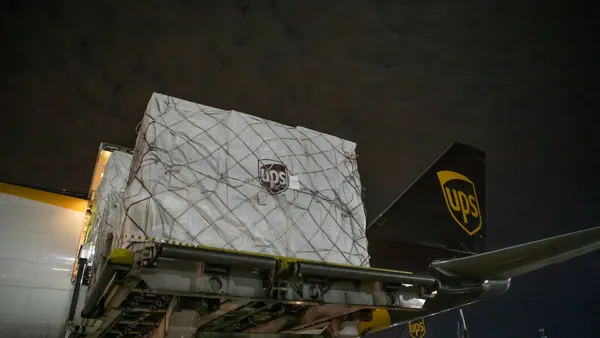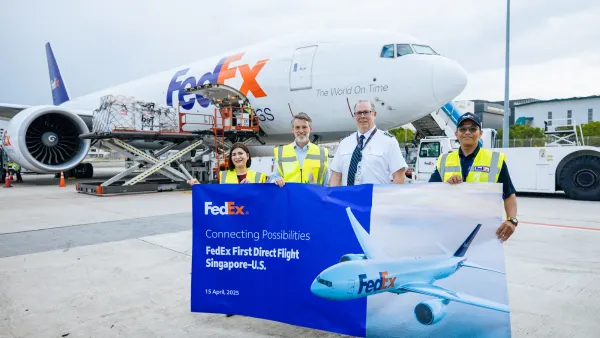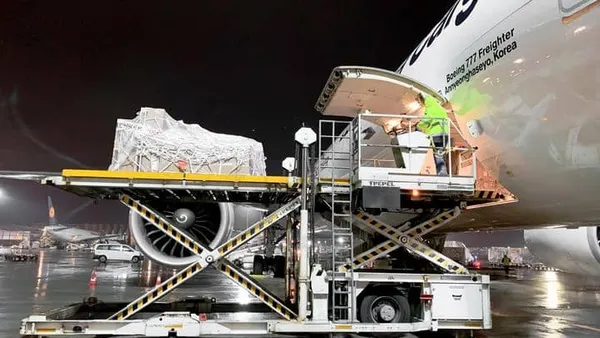Dive Brief:
- Airfreight volume fell nearly 18% year over year (YoY) in June, according to the latest numbers from the International Air Transport Association (IATA). Freight capacity fell 34% YoY in June.
- "Cargo is, by far, healthier than the passenger markets but doing business remains exceptionally challenging," IATA CEO Alexandre de Juniac said in a statement. "While economic activity is re-starting after major lockdown disruptions there has not been a major boost in demand."
- In June, a 70% YoY decline in belly capacity drove a downturn in overall air cargo availability, as passenger flights have not returned to a pre-pandemic level. A 32% YoY increase in dedicated freighter capacity has not been enough to offset the passenger planes stripped from the market.
Dive Insight:
Some airfreight operators have seen rare bright spots in their business as airfreight capacity has shriveled. C.H. Robinson's airfreight revenue more than doubled in the second quarter compared to the same time last year, according to the company's earnings.
"The air market in second quarter was impacted by reduced cargo capacity, increased charter flights and larger than normal shipment sizes, which created an environment with unusually high rates for airfreight," C.H. Robinson CEO Bob Biesterfeld said on the Wednesday earnings call.
The company does not expect 100% increases in airfreight revenue to be the new normal and it acknowledged that rates have fallen from their Q2 peak, but demand is still strong for charter service carrying into the third quarter as capacity remains tight, Biesterfeld said.
C.H. Robinson's revenue and pricing increased for airfreight while it was hauling less volume, according to slides shown during the earnings presentation — a dichotomy that highlights the struggle shippers have faced in this environment: If an importer or exporter wants to move via air, it might cost more than last year.
Airfreight rates from China/Hong Kong to the U.S. are climbing again after falling throughout the month of July. The current rate is nearly $5.20 per kilogram as of July 27, according to the TAC Index. This represents a 62% increase compared to the same time last year, but a 49% decline since the rate's peak in early May.
Airfreight performed so well for C.H. Robinson that it was able to offset a nearly 8% decline in ocean revenue and help the company realize an almost 15% increase in revenue within its global forwarding business.
"It remains to be seen how sustainable this will be given the normalization of pricing on some of these lanes," Morgan Stanley analysts wrote in a research note following C.H. Robinson's call.














